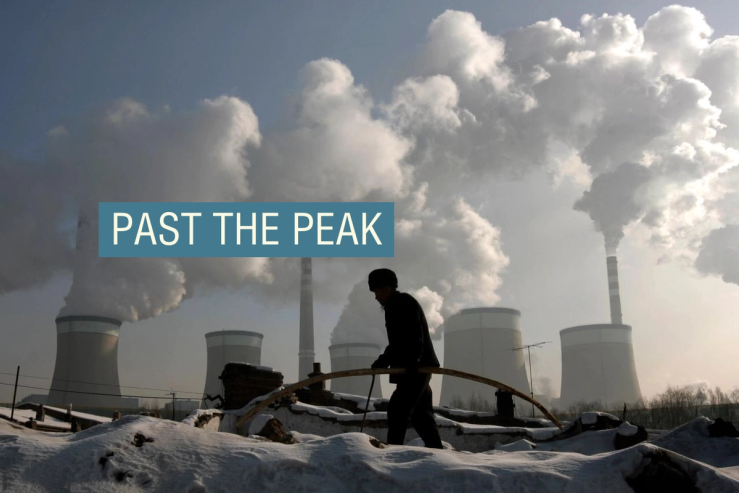The News
China — the world’s largest greenhouse gas emitter — is expected to announce new climate targets in the next few weeks, setting out its first roadmap for a decline in emissions.
Beijing’s announcement, one of the most important moments on this year’s global climate agenda, will have a profound impact on the world’s effort to limit global warming to 1.5 degrees Celsius: The country’s huge emissions volume is an obvious reason, but what is more significant is that this climate plan will extend to 2035 and into a period when China moves past peak emissions.
The targets are “incredibly important” in signalling how fast China intends to slash its emissions to achieve carbon neutrality before its self-imposed deadline of 2060, Lauri Myllyvirta, a senior fellow at the Asia Society Policy Institute, a US think tank, told me.
Xiaoying’s view
China’s target-setting — all signatories to the Paris Agreement are required to submit “nationally determined contributions” to the UN by the end of February — comes amid a particularly complex geopolitical landscape for Beijing.
US President-elect Donald Trump is returning to the White House with promises to support the fossil fuel industry and blockade Chinese goods, and is likely to pull the US out of the Paris Agreement again. And China is locking horns with the European Union over tariffs on electric vehicles.
External pressure is also mounting on China. Previously, Beijing had insisted that rich nations take the lead in slashing world carbon emissions due to their historic responsibility for such pollution. But recent analysis by Carbon Brief revealed that China has already overtaken the EU as the world’s second-largest historic carbon emitter, though it still trails the United States.
It also represents an opportunity for Beijing to position itself as a leader on this front, given its progress on climate targets and global role in the clean-energy supply chain: “This is a good opportunity [for China] to propose more ambitious goals, contrasting the likely inaction by the US in reducing its emissions,” Mo Zhengchun, principal of the Beijing-based Institute for Global Decarbonization Progress, told me.
Know More
China’s Vice Premier Ding Xuexiang pledged at November’s COP29 climate summit in Baku that China’s 2035 targets would count all greenhouse gases and cover all aspects of the country’s economy — potentially a significant shift for Beijing.
So far, China has used carbon intensity — the amount of carbon dioxide emitted per unit of GDP — as its official target. It announced the metric in 2009, at the height of its economic growth, after facing pressure to set a quantitative goal to curb its emissions. Its argument was that it was a target that wouldn’t constrain China’s growth.
A shift to a hard cap on carbon emissions would bring Beijing in line with developed countries, the only ones required by the Paris Agreement to set absolute emission reduction goals.
China’s leadership last year confirmed it will bring total emissions volume into its emission-reduction strategy — to support carbon intensity — from 2026 and use it as the main gauge after hitting peak emissions, spurring hopes that an absolute cap is on the horizon.
Some analysts are urging China to aim high. The country needs to cut “at least 30%” of its greenhouse gas emissions by 2035 compared to 2023 levels for the world to have a chance to limit global warming to 1.5 degrees Celsius, according to Myllyvirta. If Beijing’s 2035 targets are “very moderate,” then “most probably” it won’t aim for steep reductions by 2040, either, he said.
That target is within Beijing’s grasp if it continues to deploy clean energy at its current pace, according to a separate analysis by Myllyvirta. That makes the goal China sets for its non-fossil energy installations by 2035 also very important, he told me.
Room for Disagreement
Some Chinese scholars have argued that the country’s emissions won’t need to drop immediately and drastically after they peak for the country to hit its carbon-neutrality goal. Teng Fei, deputy director of the Institute of Energy, Environment and Economy at Tsinghua University in Beijing, told Dialogue Earth that he did not expect to see “big falls” in China’s emissions in the five years following the peak. He pointed to modelling that projected a “gradual fall” between 2035 to 2040, and an “increasingly steep downward curve” afterward.
The View From the UK
Piers Forster, a professor of physical climate change at the University of Leeds in the UK, compared China’s plans to adopt emissions caps — and potentially incorporate them into official five-year plans — to the UK’s successful use of carbon budgets, which limit the country’s total amount of greenhouse gases emissions over a five-year period. Since the implementation of carbon budgeting in 2008, the UK has halved its annual emissions compared to 1990 levels.
Notable
- Nine leading experts from across the world — including former US climate envoy Todd Stern — set out what they expected to see in China’s 2035 targets in a compilation of interviews by Carbon Brief’s Anika Patel.


